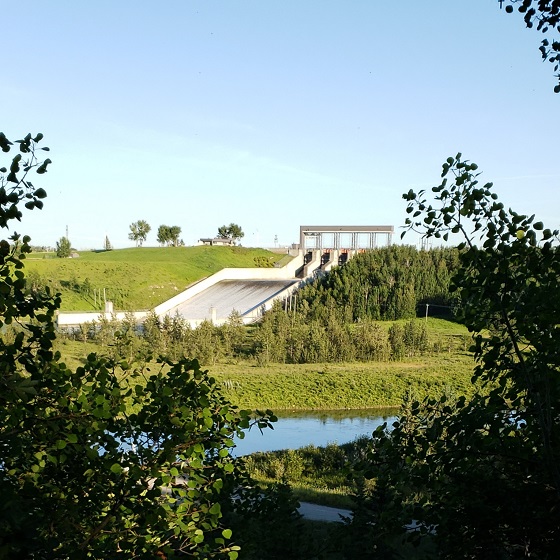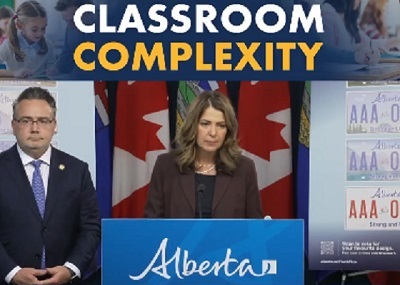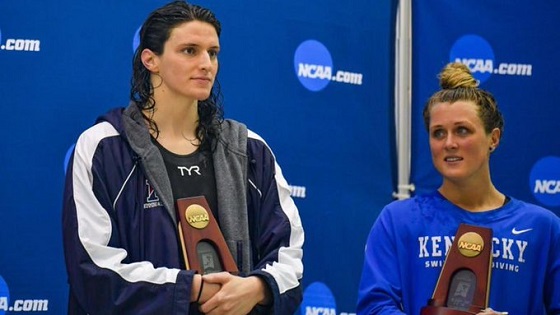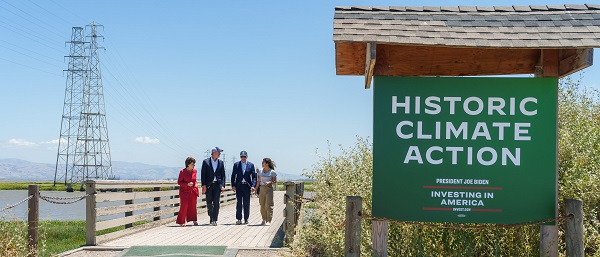Alberta
Province considering new Red Deer River reservoir east of Red Deer

Central Alberta reservoir study underway
Alberta’s government is moving forward a study to assess the feasibility of building a new reservoir on the Red Deer River to help support growing communities.
Demand for water from communities and businesses is increasing as more families, businesses and industries choose to live and work in central Alberta. The Red Deer River supplies water to hundreds of thousands of Albertans across the region and expanding water storage capacity could help reduce the risk of future droughts and meet the growing water demands.
Alberta’s government has now begun assessing the feasibility of building a potential new reservoir east of Red Deer near Ardley. A two-phase, multi-year study will explore the costs and value of constructing and operating the reservoir, and its impact on downstream communities, farmers and ranchers, and businesses.
“Central Alberta is a growing and thriving, and we are ensuring that it has the water it needs. This study will help us determine if an Ardley reservoir is effective and how it can be built and operated successfully to help us manage and maximize water storage for years to come.”
Reservoirs play a vital role in irrigation, drought management, water security and flood protection. Budget 2024 allocated $4.5 million to explore creating a new reservoir on the Red Deer River, at a damsite about 40 kilometres east of the City of Red Deer.
Work will begin on the scoping phase of the study as soon as possible. This will include reviewing available geotechnical and hydrotechnical information and exploring conceptual dam options. The scoping phase also includes meetings with municipalities and water users in the area to hear their views. This work is expected to be completed by December 2025.
“Reliable water infrastructure is essential for Alberta’s growing communities and industries. The Ardley reservoir feasibility study is a vital step toward ensuring long-term water security for central Alberta. As we assess this project’s potential, we’re supporting the sustainability of our economic corridors, agricultural operations and rural economy.”
“Water is essential to the agriculture industry and if the past few years are any indication, we need to prepare for dry conditions. A potential dam near Ardley could enhance water security and help farmers and ranchers continue to thrive in Alberta’s unpredictable conditions.”
Once that is complete, the feasibility study will then shift into a second phase, looking more closely at whether an effective new dam near Ardley can be safely designed and constructed, and the impact it may have on communities and the environment. Geotechnical and hydrotechnical investigations, cost-benefit analyses and an assessment of environmental and regulatory requirements will occur. The feasibility phase will also include gathering feedback directly from Albertans through public engagement. This work is expected to be completed by March 31, 2026.
Quick facts
- The Ardley dam scoping and feasibility study will be undertaken by Hatch Ltd., a Canadian multi-disciplinary professional services firm.
- Once the feasibility study is complete, government will assess the results and determine whether to pursue this project and proceed with detailed engineering and design work and regulatory approvals.
- Alberta’s government owns and operates several large reservoirs in the South Saskatchewan River Basin that help ensure sufficient water supply to meet demand from communities, irrigators and businesses, while also maintaining a healthy aquatic environment.
- Water stored at Gleniffer Lake, the reservoir created by Dickson Dam, helps supplement low winter flows along the Red Deer River and helps ensure an adequate water supply for Red Deer and Drumheller.
Related information
Alberta
Alberta taxpayers should know how much their municipal governments spend

From the Fraser Institute
By Tegan Hill and Austin Thompson
Next week, voters across Alberta will go to the polls to elect their local governments. Of course, while the issues vary depending on the city, town or district, all municipal governments spend taxpayer money.
And according to a recent study, Grande Prairie County and Red Deer County were among Alberta’s highest-spending municipalities (on a per-person basis) in 2023 (the latest year of comparable data). Kara Westerlund, president of the Rural Municipalities of Alberta, said that’s no surprise—arguing that it’s expensive to serve a small number of residents spread over large areas.
That challenge is real. In rural areas, fewer people share the cost of roads, parks and emergency services. But high spending isn’t inevitable. Some rural municipalities managed to spend far less, demonstrating that local choices about what services to provide, and how to deliver them, matter.
Consider the contrast in spending levels among rural counties. In 2023, Grande Prairie County and Red Deer County spent $5,413 and $4,619 per person, respectively. Foothills County, by comparison, spent just $2,570 per person. All three counties have relatively low population densities (fewer than seven residents per square kilometre) yet their per-person spending varies widely. (In case you’re wondering, Calgary spent $3,144 and Edmonton spent $3,241.)
Some of that variation reflects differences in the cost of similar services. For example, all three counties provide fire protection but in 2023 this service cost $56.95 per person in Grande Prairie County, $38.51 in Red Deer County and $10.32 in Foothills County. Other spending differences reflect not just how much is spent, but whether a service is offered at all. For instance, in 2023 Grande Prairie County recorded $46,283 in daycare spending, while Red Deer County and Foothills County had none.
Put simply, population density alone simply doesn’t explain why some municipalities spend more than others. Much depends on the choices municipal governments make and how efficiently they deliver services.
Westerlund also dismissed comparisons showing that some counties spend more per person than nearby towns and cities, calling them “apples to oranges.” It’s true that rural municipalities and cities differ—but that doesn’t make comparisons meaningless. After all, whether apples are a good deal depends on the price of other fruit, and a savvy shopper might switch to oranges if they offer better value. In the same way, comparing municipal spending—across all types of communities—helps Albertans judge whether they get good value for their tax dollars.
Every municipality offers a different mix of services and those choices come with different price tags. Consider three nearby municipalities: in 2023, Rockyview County spent $3,419 per person, Calgary spent $3,144 and Airdrie spent $2,187. These differences reflect real trade-offs in the scope, quality and cost of local services. Albertans should decide for themselves which mix of local services best suits their needs—but they can’t do that without clear data on what those services actually cost.
A big municipal tax bill isn’t an inevitable consequence of rural living. How much gets spent in each Alberta municipality depends greatly on the choices made by the mayors, reeves and councillors Albertans will elect next week. And for Albertans to determine whether or not they get good value for their local tax dollars, they must know how much their municipality is spending.
Alberta
Premier Smith addresses the most important issue facing Alberta teachers: Classroom Complexity

Premier Danielle Smith is posting this response to a media question about Classroom Complexity.
While Albertans are hearing a lot about capping class sizes, Premier Smith says it might be a much better idea to talk about capping “complexity”.
The challenges teachers face in today’s classrooms are recognized, and work continues toward practical solutions that address their concerns.
Achieving a fair and reasonable agreement that best supports students remains a top priority. pic.twitter.com/o4UCt7sDoU
— Danielle Smith (@ABDanielleSmith) October 16, 2025
-

 Alberta2 days ago
Alberta2 days agoClick here to help choose Alberta’s new licence plate design
-

 Business1 day ago
Business1 day ago‘Taxation Without Representation’: Trump Admin Battles UN Over Global Carbon Tax
-

 espionage21 hours ago
espionage21 hours agoBreaking: P.E.I. Urges RCMP Probe of Alleged Foreign Interference, Money Laundering
-

 International2 days ago
International2 days agoDaughter convinces healthy father to die in double assisted suicide with mother
-

 Alberta1 day ago
Alberta1 day agoPremier Smith addresses the most important issue facing Alberta teachers: Classroom Complexity
-

 Alberta1 day ago
Alberta1 day agoAlberta taxpayers should know how much their municipal governments spend
-

 National2 days ago
National2 days agoDemocracy Watch Renews Push for Independent Prosecutor in SNC-Lavalin Case
-

 International1 day ago
International1 day agoHamas will disarm or die




